Sähköpyörän muuntosarjat ovat erikoispaketteja, jotka on suunniteltu muuttamaan perinteinen polkupyörä sähköpyöräksi, jota yleisesti kutsutaan sähköpyöräksi. Nämä sarjat sisältävät tyypillisesti tärkeitä komponentteja, kuten moottorin, akun, ohjaimen ja erilaisia kiinnitystarvikkeita. Näiden sarjojen ensisijaisena tarkoituksena on tarjota pyöräilijöille tehokas ja kustannustehokas tapa nauttia sähköpyöräilyn eduista ilman, että heidän tarvitsee ostaa upouutta sähköpyörää.
Muunnossarjojen monipuolisuus antaa käyttäjille mahdollisuuden valita sarjan, joka sopii parhaiten heidän nykyiseen polkupyörämalliinsa, olipa kyseessä sitten maantiepyörä, maastopyörä tai hybridipyörä. Sähköpyörän muunnossarjan komponentit voivat vaihdella huomattavasti valmistajan ja käyttötarkoituksen mukaan. Joissakin sarjoissa voi esimerkiksi olla pyörään integroidut napamoottorit, kun taas toisissa voidaan käyttää keskivetomoottoreita, jotka on asennettu pyörän kampisarjan lähelle.
Lisäksi akun kapasiteetti voi vaihdella, mikä vaikuttaa muunnetun pyörän toimintasäteeseen ja tehoon. Tämä joustavuus antaa pyöräilijöille mahdollisuuden mukauttaa sähköpyöräilykokemuksensa omien tarpeidensa mukaan, olipa kyseessä sitten työmatka, jyrkkien mäkien kiipeäminen tai rento ajo tasaisella maastolla.
Keskeiset tiedot
- Sähköpyörän muuntosarjat ovat jälkimarkkinoilla ostettavia sarjoja, jotka voidaan asentaa tavalliseen polkupyörään ja muuttaa se sähköpyöräksi.
- Sähköpyörään päivittäminen tarjoaa etuja, kuten lisääntyneen nopeuden, vähemmän polkemisvoimaa ja kyvyn selviytyä mäkisessä maastossa helpommin.
- Kun valitset oikean sähköpyörän muunnossarjan, ota huomioon sellaisia tekijöitä kuin moottorin tyyppi, akun kapasiteetti ja yhteensopivuus nykyisen pyöräsi kanssa.
- Sähköpyörämuunnossarjojen asianmukainen asennus ja huolto ovat välttämättömiä optimaalisen suorituskyvyn ja pitkäikäisyyden saavuttamiseksi.
- Sähköpyörämuunnossarjojen turvallisuusnäkökohtiin kuuluvat kypärän käyttö, liikennesääntöjen noudattaminen ja sähköpyörän lisääntyneen nopeuden ja tehon tiedostaminen.
Sähköpyörään päivittämisen edut
Parannettu ajomukavuus
Sähkömoottori tarjoaa apua, jolloin pyöräilijät voivat selvitä haastavista maastoista ja pitkistä matkoista vähemmällä fyysisellä rasituksella. Tämä ominaisuus on erityisen hyödyllinen henkilöille, joilla voi olla fyysisiä rajoituksia tai jotka palaavat pyöräilyn pariin pitkän tauon jälkeen. Lisäteho voi tehdä pyöräilystä helpommin saavutettavaa ja nautinnollisempaa laajemmalle yleisölle.
Tehokkaampi työmatkaliikenne
Sähkömoottorin avulla pyöräilijät voivat liikkua liikenteessä helpommin ja saapua määränpäähänsä nopeammin kuin perinteisellä pyörällä. Tämä voi olla erityisen edullista kaupunkiympäristöissä, joissa ruuhkat ovat yleisiä. Lisäksi sähköpyörät voivat vähentää riippuvuutta autoista, mikä osaltaan vähentää hiilidioksidipäästöjä ja edistää kestävämpää liikkumismuotoa.
Toteutettava ratkaisu ympäristötietoisille työmatkalaisille
Kaupunkien kamppaillessa edelleen saasteiden ja liikenneruuhkien kanssa sähköpyörät tarjoavat käyttökelpoisen ratkaisun ympäristötietoisille työmatkalaisille.
Oikean sähköpyörän muunnossarjan valitseminen
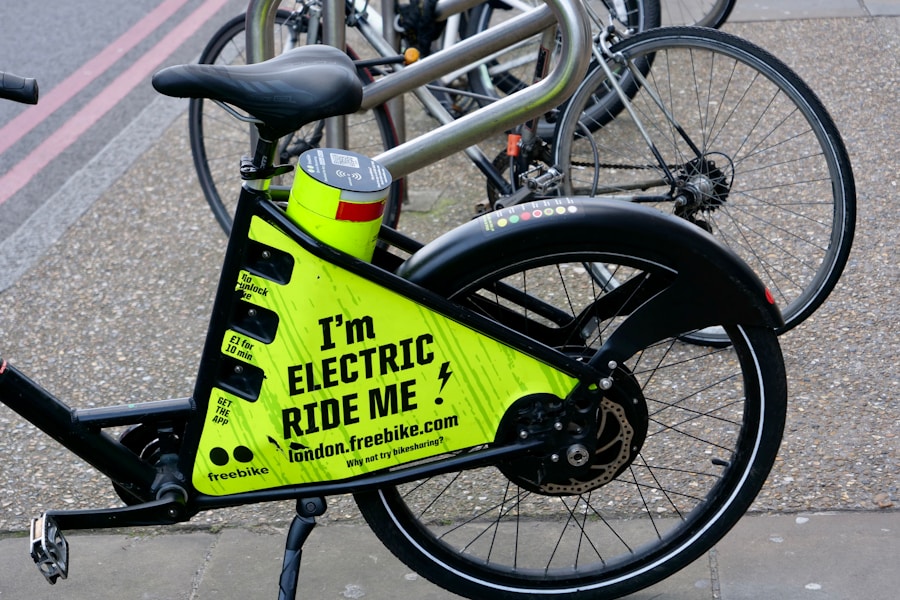
Sopivan sähköpyörän muunnossarjan valinta vaatii useiden tekijöiden huolellista harkintaa, mukaan lukien muunnettavan polkupyörän tyyppi, halutut suorituskykyominaisuudet ja budjettirajoitukset. Yksi ensimmäisistä vaiheista tässä prosessissa on olemassa olevan polkupyörän rungon ja komponenttien arviointi sen varmistamiseksi, että ne ovat yhteensopivia valitun sarjan kanssa. Jos esimerkiksi pyöräilijällä on maastopyörä, jossa on levyjarrut, hänen tulisi etsiä muunnossarjaa, joka tukee tätä ominaisuutta.
Lisäksi erilaisten saatavilla olevien moottorityyppien – napamoottorien ja keskivetomoottoreiden – ymmärtäminen voi auttaa pyöräilijöitä tekemään tietoon perustuvia päätöksiä ajotyyliinsä ja maastomieltymyksiinsä perustuen. Toinen tärkeä huomioon otettava seikka on akun kapasiteetti ja toimintasäde. Eri sarjoissa on akkuja, joiden jännite ja ampeerituntiarvot vaihtelevat, mikä vaikuttaa suoraan siihen, kuinka pitkän matkan pyöräilijä voi ajaa yhdellä latauksella.
Pidempiä työmatkoja tai vapaa-ajan ajeluja varten sähköpyöräilijöiden kannattaa valita tehokkaampi akku. Lisäksi valmistajan laadun ja maineen arviointi on tärkeää; vakiintuneet tuotemerkit tarjoavat usein parempaa asiakastukea ja takuuvaihtoehtoja varmistaen, että käyttäjillä on saatavilla apua, jos asennuksen tai käytön aikana ilmenee ongelmia.
Asennus- ja huoltovinkkejä
| Kärki |
Kuvaus |
| Säännöllinen tarkastus |
Tarkista asennus säännöllisesti mahdollisten ongelmien tai huoltotarpeiden tunnistamiseksi. |
| Oikea voitelu |
Varmista, että kaikki liikkuvat osat on voideltu asianmukaisesti kulumisen estämiseksi. |
| Oikea kohdistus |
Tarkista ja pidä osien oikea kohdistus yllä ennenaikaisten vaurioiden välttämiseksi. |
| Roskien raivaaminen |
Poista asennuksesta säännöllisesti roskat ja tukokset vaurioiden välttämiseksi. |
| Ammattimainen huolto |
Hakeudu säännöllisin väliajoin ammattimaiseen huoltoon optimaalisen suorituskyvyn varmistamiseksi. |
Sähköpyörän muuntosarjan asentaminen voi olla palkitseva projekti tee-se-itse-harrastajille, mutta se vaatii yksityiskohtien huomioimista ja turvallisuusprotokollien noudattamista. Ennen asennusprosessin aloittamista on erittäin tärkeää lukea kaikki valmistajan toimittamat ohjeet huolellisesti. Jokaisella sarjalla voi olla ainutlaatuiset vaatimukset ja vaiheet, joita on noudatettava tarkasti oikean toiminnan varmistamiseksi.
Kaikkien tarvittavien työkalujen, kuten jakoavainten, ruuvimeisselien ja nippusiteiden, kerääminen etukäteen voi tehostaa asennusprosessia ja minimoida turhautumisen. Asennuksen aikana on tärkeää kiinnittää erityistä huomiota johtojen liitäntöihin ja varmistaa, että kaikki komponentit on kiinnitetty tukevasti. Esimerkiksi moottoria pyörään tai runkoon kiinnitettäessä on tärkeää noudattaa vääntömomenttiohjeita, jotta vältetään osien vaurioituminen tai turvallisuuden vaarantuminen.
Asennuksen jälkeen säännöllinen huolto on avainasemassa sähköpyörän optimaalisessa kunnossa pitämisessä. Tähän sisältyy rengaspaineiden tarkistaminen, jarrujärjestelmien tarkastaminen ja sähköliitäntöjen pitävyyden varmistaminen. Lisäksi moottorin ja akun napojen säännöllinen puhdistus voi auttaa estämään korroosiota ja pidentää näiden komponenttien käyttöikää.
Sähköpyörämuunnossarjojen turvallisuusnäkökohdat
Turvallisuuden tulisi aina olla etusijalla perinteisen polkupyörän muuntamisessa sähköpyöräksi. Yksi tärkeimmistä huolenaiheista on varmistaa, että jarrujärjestelmä on riittävä sähköpyöriin liittyvän lisääntyneen nopeuden ja painon kannalta. Monissa muunnossarjoissa on suosituksia jarrujen päivittämisestä tai lisäjarrujärjestelmien asentamisesta jarrutustehon parantamiseksi.
Pyöräilijöiden tulisi myös harkita leveämpien renkaiden käyttöä, joilla on parempi pito ja vakaus, varsinkin jos he aikovat ajaa vaihtelevissa maastoissa. Toinen tärkeä turvallisuusnäkökohta on paikallisten sähköpyöriä koskevien lakien ja määräysten ymmärtäminen. Eri alueilla on erityisiä sääntöjä nopeusrajoituksista, moottorin tehosta ja siitä, missä sähköpyörillä saa ajaa.
Näihin määräyksiin tutustuminen voi auttaa ehkäisemään oikeudellisia ongelmia ja varmistamaan turvallisen ajotavan. Lisäksi asianmukaisten turvavarusteiden, kuten kypärän, heijastavien vaatteiden ja valojen, käyttö voi merkittävästi vähentää onnettomuusriskiä sähköpyörällä ajettaessa.
Sähköpyörämuunnossarjojen kustannus- ja säästöanalyysi

Sähköpyörään muutossarjan avulla päivittämisen taloudellisia vaikutuksia arvioitaessa on tärkeää ottaa huomioon sekä alkukustannukset että pitkän aikavälin säästöt. Muunnossarjojen hinta voi vaihdella suuresti esimerkiksi moottorityypin, akun kapasiteetin ja tuotemerkin maineen mukaan. Pyöräilijät voivat odottaa käyttävänsä laadukkaaseen muutossarjaan keskimäärin 1 TP8–1 500 dollaria.
Tämä kustannus on usein huomattavasti alhaisempi kuin uuden sähköpyörän ostaminen, joka voi vaihdella 1 000–8 000 eurosta yli 5 000 euroon ominaisuuksista ja teknisistä tiedoista riippuen. Alkukustannusten lisäksi analyysissä tulisi ottaa huomioon myös mahdolliset säästöt. Sähköpyörät voivat vähentää kuljetuskustannuksia minimoimalla riippuvuuden autoista tai julkisesta liikenteestä.
Sähköpyöräänsä työmatkoilla käyttävät pyöräilijät saattavat huomata säästävänsä rahaa polttoainekustannuksissa, pysäköintimaksuissa ja perinteisiin ajoneuvoihin verrattuna. Lisäksi sähköpyörät vaativat usein vähemmän huoltoa kuin autot, mikä johtaa lisäsäästöihin ajan myötä. Kun näitä tekijöitä – alkuinvestointi vs. pitkän aikavälin säästöt – tarkastellaan yhdessä, monet pyöräilijät huomaavat, että nykyisen polkupyörän muuttaminen sähkömalliksi on paitsi taloudellisesti kannattava myös ympäristöystävällinen valinta, joka edistää terveellisempiä elämäntapoja.
Usein kysytyt kysymykset
Mikä on sähköpyörän muuntosarja?
Sähköpyörän muunnossarja on joukko komponentteja, jotka voidaan lisätä perinteiseen poljinkäyttöiseen polkupyörään sen muuttamiseksi sähköpyöräksi. Sarja sisältää tyypillisesti moottorin, akun, ohjaimen ja muut tarvittavat osat.
Miten sähköpyörän muuntosarja toimii?
Muunnossarjan moottori on kiinnitetty polkupyörän runkoon tai kiekkoon, ja akku antaa moottorille virtaa, mikä antaa sähköavustusta polkiessa. Ohjain säätelee sähkön kulkua moottoriin, jolloin ajaja voi säätää avun tasoa.
Mitä etuja sähköpyörän muuntosarjan käyttämisestä on?
Sähköpyörän muunnossarjan avulla pyöräilijät voivat nauttia sähköavustuksen eduista ilman erillisen sähköpyörän ostamista. Se tarjoaa myös joustavuutta muuntaa olemassa oleva polkupyörä sähköpyöräksi, mikä säästää rahaa ja vähentää jätettä.
Ovatko sähköpyörän muunnossarjat yhteensopivia kaikkien polkupyörien kanssa?
Sähköpyörän muuntosarjat ovat yleensä yhteensopivia useimpien polkupyörien kanssa, mutta on tärkeää varmistaa, että sarja sopii pyörän tietylle tyypille ja koolle. Jotkin sarjat saattavat vaatia tiettyjä muutoksia tai säätöjä sopiakseen oikein.
Kuinka vaikeaa sähköpyörän muunnossarjan asentaminen on?
Sähköpyörämuunnossarjan asennuksen vaikeusaste voi vaihdella sarjan tyypistä ja käyttäjän mekaanisista taidoista riippuen. Jotkut sarjat saattavat vaatia perustyökaluja ja mekaanista tietämystä, kun taas toiset voivat olla monimutkaisempia ja vaatia ammattilaisen asennuksen.
Onko saatavilla erilaisia sähköpyörän muunnossarjoja?
Kyllä, saatavilla on erityyppisiä sähköpyörämuunnossarjoja, kuten etupyörä-, takapyörä- ja keskivetoisia sarjoja. Jokaisella tyypillä on omat etunsa ja huomioitavansa asiat, kuten helppo asennus, painonjako ja yhteensopivuus eri polkupyörämallien kanssa.
 Electric E5B 6000W 60V 40Ah 85km/h 150km 11" sähköpotkulauta
1 × 1 236,31 €
Electric E5B 6000W 60V 40Ah 85km/h 150km 11" sähköpotkulauta
1 × 1 236,31 € 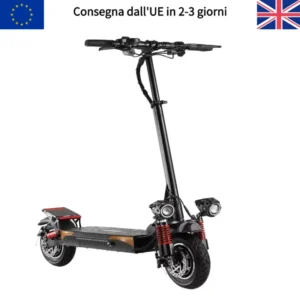 Electricib X4 1600W 48V 17.5Ah 45km/h 70km 10" sähköpotkulauta kahdella moottorilla
1 × 828,38 €
Electricib X4 1600W 48V 17.5Ah 45km/h 70km 10" sähköpotkulauta kahdella moottorilla
1 × 828,38 € 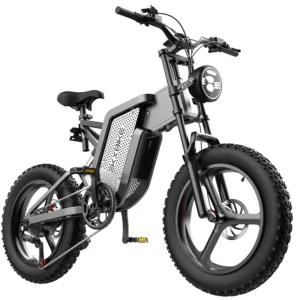 EKXBike X20 2000W 48V 35Ah >50km/h 31-60km 20" sähkömaastopyörä
1 × 1 565,82 €
EKXBike X20 2000W 48V 35Ah >50km/h 31-60km 20" sähkömaastopyörä
1 × 1 565,82 € 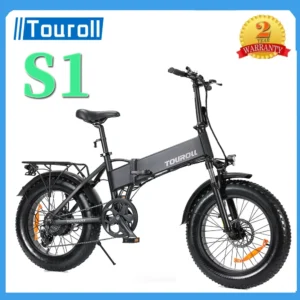 Touroll S1 Electric Fat Bike 25 km/h 20'x4.0' Fat Renkaat 60 Nm Vääntömomentti 15.6Ah Toimintasäde 100 km 7-vaihteinen Shimano-vaihteisto Sähköpyörät
1 × 1 362,45 €
Touroll S1 Electric Fat Bike 25 km/h 20'x4.0' Fat Renkaat 60 Nm Vääntömomentti 15.6Ah Toimintasäde 100 km 7-vaihteinen Shimano-vaihteisto Sähköpyörät
1 × 1 362,45 € 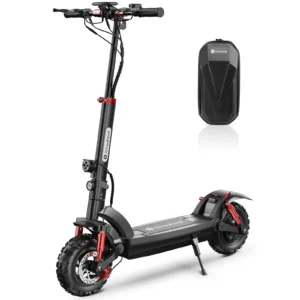 isinwheel GT2 sähköpotkulauta 800 W moottori 48 V 15 Ah akku 40 km/h 11 tuuman maastorengas taitettava älysovellus aikuisille tarkoitettu potkulauta
1 × 1 045,01 €
isinwheel GT2 sähköpotkulauta 800 W moottori 48 V 15 Ah akku 40 km/h 11 tuuman maastorengas taitettava älysovellus aikuisille tarkoitettu potkulauta
1 × 1 045,01 € 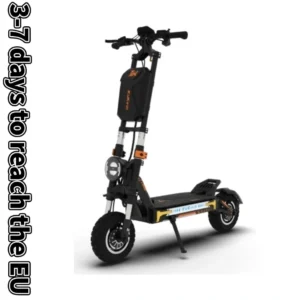 Kukirin G4 Max, G4 Max, 3200 W, 60 V, 35,2 Ah, 86 km/h, 95 km, 12 tuuman sähköpotkulauta kahdella moottorilla
1 × 2 789,56 €
Kukirin G4 Max, G4 Max, 3200 W, 60 V, 35,2 Ah, 86 km/h, 95 km, 12 tuuman sähköpotkulauta kahdella moottorilla
1 × 2 789,56 € 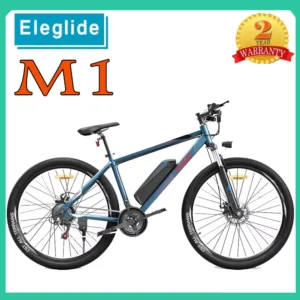 ELEGLIDE M1 aikuisille tarkoitettu sähköpyörä, päivitetty versio, 27,5 tuuman maastopyörä, kaupunkipyörä, 250 W:n harjaton moottori, SHIMANO-vaihtaja, 21 tuumaa
1 × 974,95 €
ELEGLIDE M1 aikuisille tarkoitettu sähköpyörä, päivitetty versio, 27,5 tuuman maastopyörä, kaupunkipyörä, 250 W:n harjaton moottori, SHIMANO-vaihtaja, 21 tuumaa
1 × 974,95 € 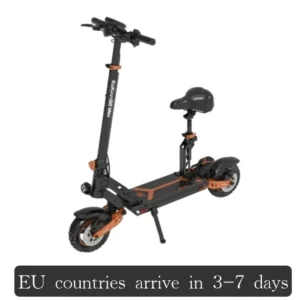 Kukirin G2 Max 1000W 48V 20.8Ah 55km/h ≤70km 10" kaksipyöräinen skootteri
1 × 1 056,91 €
Kukirin G2 Max 1000W 48V 20.8Ah 55km/h ≤70km 10" kaksipyöräinen skootteri
1 × 1 056,91 € 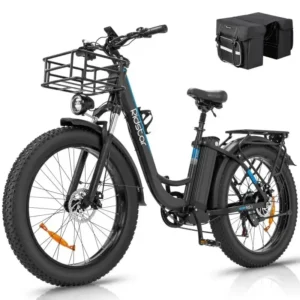 Ridstar MN26 1500W 48V 20Ah 30-50km/h >60km 26" sähköpyörä kaupunkikäyttöön
1 × 1 392,80 €
Ridstar MN26 1500W 48V 20Ah 30-50km/h >60km 26" sähköpyörä kaupunkikäyttöön
1 × 1 392,80 €  Kukirin G3 1200W 52V 18Ah 50km/h 60-80km 10.5" kokoontaitettava sähköpotkulauta
1 × 789,32 €
Kukirin G3 1200W 52V 18Ah 50km/h 60-80km 10.5" kokoontaitettava sähköpotkulauta
1 × 789,32 € 


